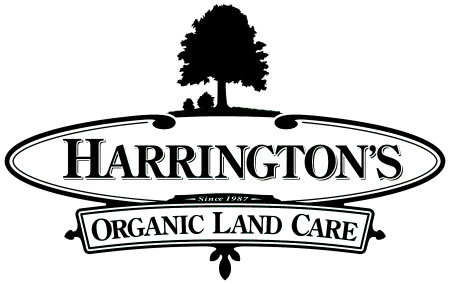

Soil Food Web
Educational Introduction Content
Discover what it takes to become a soil food web advisor and make a difference in the world. Learn how to be certified and make your mark in the agricultural field.
Soil Food Web Advisors are professionals who specialize in understanding and managing the soil biology and ecology of agricultural, urban, and natural ecosystems. Working with land managers and farmers, Soil Food Web Advisors help to optimize soil health through biological means such as composting, cover cropping, mulching, or other soil amendments. To become a Soil Food Web Advisor requires a strong foundation in soil biology, ecology, chemistry and physics.
In addition to having a full understanding of the science behind soils, an advisor should be knowledgeable about various management techniques that can be used to improve soil health. This includes crop rotation plans to reduce disease pressure on crops; developing strategies for incorporating nitrogen-fixing plants into cropping systems; determining when and how much fertilizer is required for maximum plant growth; as well as identifying beneficial microorganisms that can enhance nutrient cycling in soils.
Matt Powers
Regenerative Soil & Permaculture
Earth Care | People Care | Future Care
Globally recognized for his expertise in permaculture and regenerative gardening, Matt Powers offers a wealth of knowledge through online courses, instructional videos, and a series of widely acclaimed books. His literary contributions have been translated into multiple languages, including Spanish, Polish, and Arabic, with translations into French and Italian anticipated shortly.
Holding a master’s degree in Education, Matt’s teaching journey has evolved remarkably over the past ten years. He transitioned from instructing at a private music school to engaging with high school students, later expanding his audience to include educators and administrators, eventually sharing his insights with larger educational districts and making appearances at universities and conferences nationwide.
His teachings emphasize permaculture, sustainability, and regenerative practices. Matt is a source of daily motivation and regenerative ideas on the internet, establishing himself as a leading figure in online permaculture education. With a following that exceeds 30,000 on Twitter and several thousand across various Facebook groups and pages, Matt covers a diverse range of subjects from permaculture principles to entrepreneurship, gardening, and mycology. Read More
What Actually
Lives In The Soil?
Let us find out together!
Since the birth of agriculture, we have tried to understand how to maintain the health of the soil. From the fertile crescent to the dust-bowl, history has shown how civilizations have crumbled through abuse of the soil. It’s only in the last century that we started to look under microscopes, and try to understand what soil is made of, and how it functions.
Soil is more than minerals and nutrients. It is a web of life held together by symbiotic and predatory relationships of microorganisms, plants, and animals. It is a world of bacteria, fungi, protozoa, nematodes, and microarthropods, visible only under a microscope. When Dr. Elaine Ingham started to explain how these relationships create healthy soil, it challenged the entire paradigm of chemical agriculture
As it turns out, soil fertility depends on more than fertilizers and minerals, it relies on the relationships of all the organisms in the soil. Only when all these organisms are in their proper balances can plants thrive and soil expand. If you’re damaging your soil organisms with tilling, compaction, herbicides, pesticides, fungicides, and fertilizers…then you’re damaging your soil fertility.
Benefits of
Productive Soil Biology
Nutrient Cycling, how it works
Soil is an essential component of healthy agricultural production and nutrient cycling, making productive soil biology a priority in order to maximize crop yields. Healthy soil is created by the presence of a diverse array of living organisms, including bacteria, fungi and other microorganisms that are collectively known as the ‘soil microbiome’. These microbes provide numerous benefits to farmers and gardeners, such as improving nutrient availability for plants through improved nutrient cycling.
Nutrient cycling is especially important for increasing crop productivity since it helps to make minerals available for plant uptake in more accessible forms. This process also helps to break down organic materials like manure or compost into simpler compounds which can then be used by plants as a source of nutrition. In addition, these microorganisms produce enzymes that help speed up chemical reactions in the soil leading to increased water infiltration rates and better root-zone aeration.
Taking on
Common Soil Problems
Control weeds naturally
In agriculture, there is a plethora of common soil problems that frustrate growers, from the smallest scale to the largest. Why do weeds take over? Why are some crops vulnerable to pests and diseases? How do you solve problems like high salt content and compaction?
Soil is more than minerals and nutrients. It is a web of life held together by symbiotic and predatory relationships of microorganisms, plants, and animals. It is a world of bacteria, fungi, protozoa, nematodes, and micro arthropods, visible only under a microscope. When Dr. Elaine Ingham started to explain how these relationships create healthy soil, it challenged the entire paradigm of chemical agriculture
Understanding
How Soil Functions
Good soil structure | Climate change
The importance of understanding how soil functions cannot be understated. Healthy soils are essential for sustaining crop production and mitigating the effects of climate change. A productive soil biology is the foundation that allows plants to grow optimally, while also providing many other benefits.
Soil organisms, such as bacteria and fungi, play key roles in helping plants access nutrients and water efficiently. Additionally, they create a supportive environment to protect plants from disease and pests. This helps farmers produce healthy crops with fewer inputs — decreasing their costs while preserving natural resources for future generations.
Furthermore, soil biology helps reduce atmospheric carbon dioxide levels by releasing carbon into the ground through decomposing organic matter — an important step in fighting climate change. When managed well, these beneficial microorganisms can improve soil fertility over time without relying on expensive fertilizers or pesticides — ultimately creating healthier ecosystems around us.

